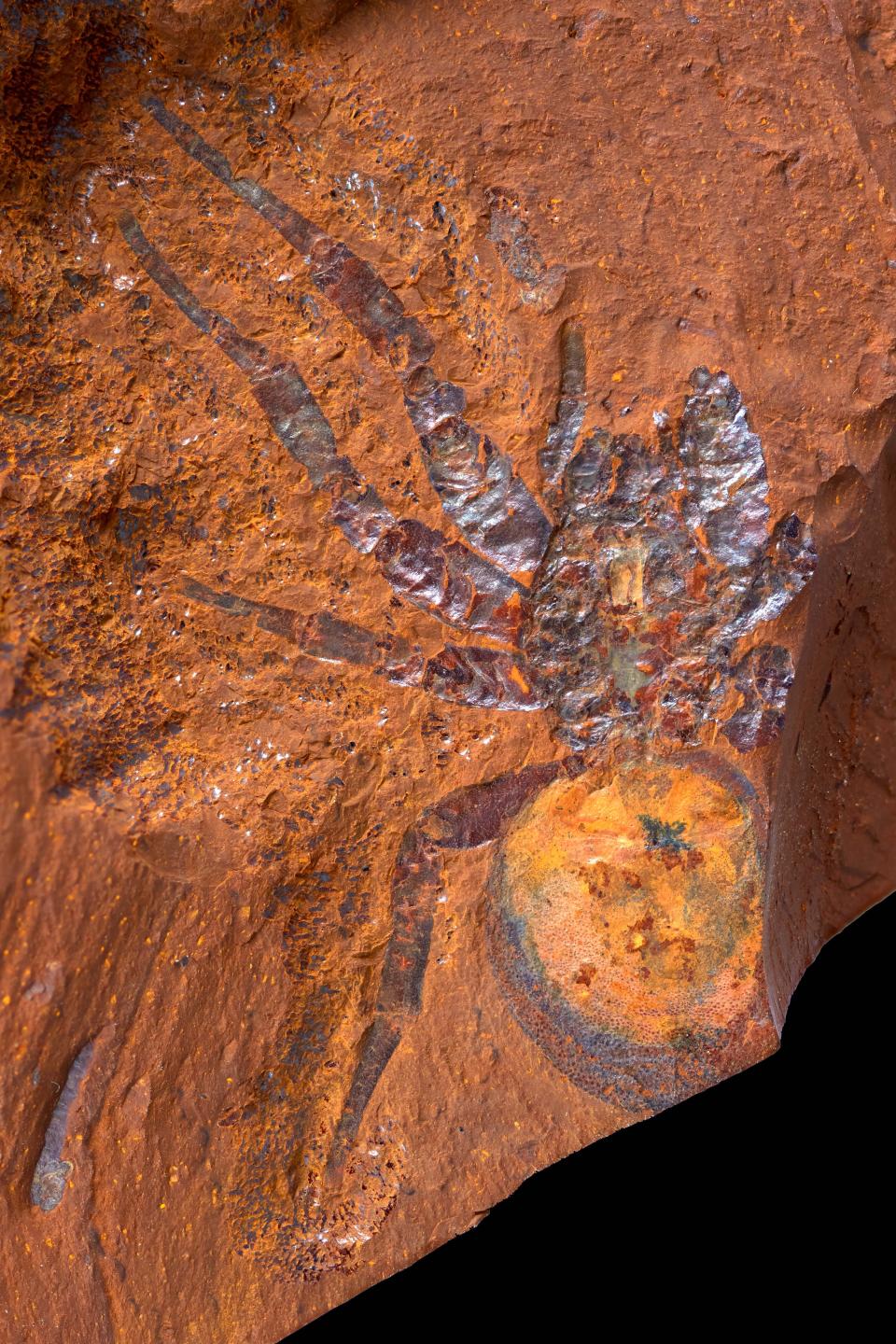Australian scientists discover rare spider fossil that could be up to 16 million years old
Scientists in Australia have discovered the fossilized remains of a trapdoor spider, the largest to date in the country.
The fossilized spider was found near Gulgong, New South Wales, last week by a team of scientists led by Matthew McCurry, a paleontologist with the University of New South Wales and the Australian Museum Research Institute.
“Only four spider fossils have ever been found throughout the whole continent, which has made it difficult for scientists to understand their evolutionary history," McCurry said in a news release. "That is why this discovery is so significant, it reveals new information about the extinction of spiders and fills a gap in our understanding of the past.”
The discovery is also the biggest of all the fossilized spiders found in Australia, Queensland Museum arachnologist Robert Raven said, according to the release.
“The closest living relative of this fossil now lives in wet forests in Singapore through to Papua New Guinea. This suggests that the group once occupied similar environments in mainland Australia but have subsequently gone extinct as Australia became more arid,” McCurry said in the release.
The fossil measures just under 1 inch, according to the research paper, but trapdoor spiders are usually smaller.
Researchers said the spider − named Megamonodontium mccluskyi − is an estimated 11 million to 16 million years old. It was discovered at the McGraths Flat, an Australian research site, and is believed to be the first fossil of the Barychelidae family found worldwide, the Australian Museum said in the release.
The fossil remains at the museum for researchers to study.

What does the fossil look like?
The spider, named after its discoverer, Simon McClusky, is similar to a trapdoor spider. According to Raven, 300 species of the brush-footed trapdoor spiders are alive today but don't fossilize.
Michael Frese, professor at the University of Canberra, says the creature has hairlike structures on its appendages that allow it to sense chemicals and vibrations. He said it helps the spider defend itself against attackers and to make sounds.
Researchers said it is the second-largest spider fossil found in the world, nearly 1 millimeter smaller than the Mongolarachne jurassica that roamed in modern-day China.
In the U.S., brush-footed trapdoor spiders are found between Florida and Virginia and west to California, according to the Arizona-Sonora Desert Museum in Tucson. Typically, the spiders feast on arthropods and small lizards and are killed by parasitic wasps.
This article originally appeared on USA TODAY: Australian scientists discover rare spider fossil

